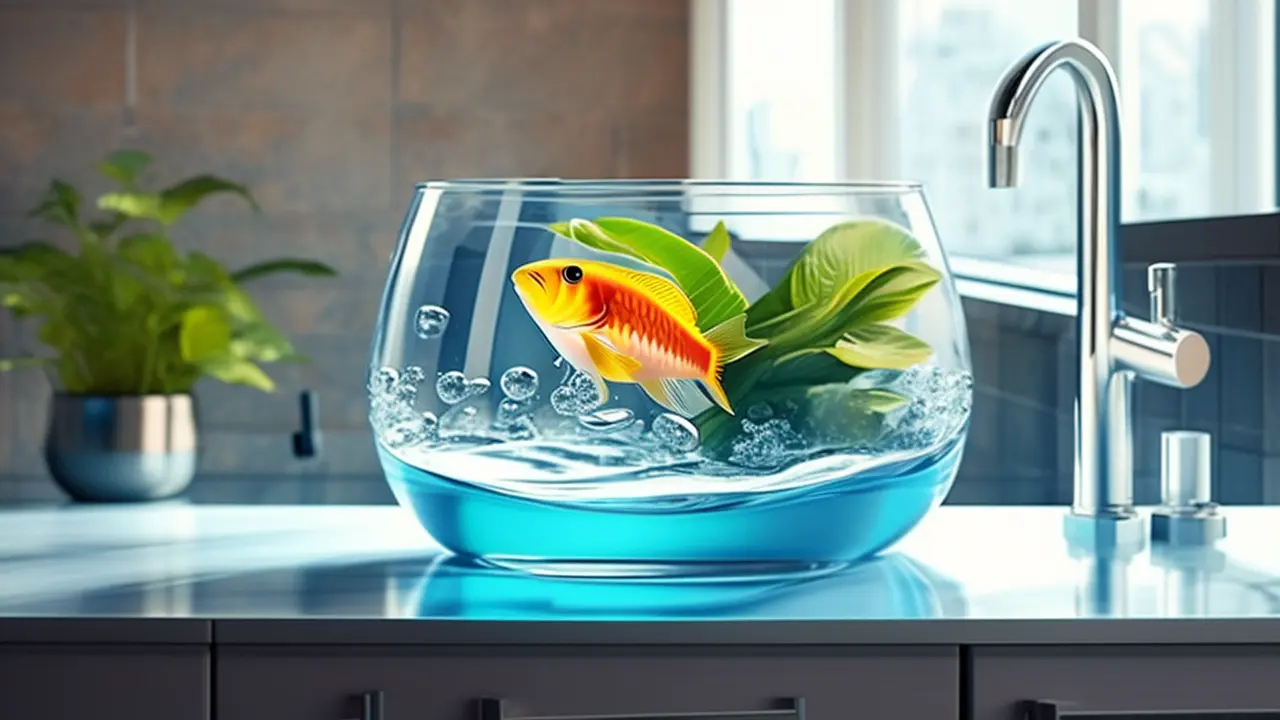Are you a proud fish owner looking to provide the best care for your underwater companions? If so, then you’ve probably heard conflicting advice about whether or not it’s safe to add tap water to your fish tank. The concern typically revolves around the presence of chlorine in tap water and its potential harm to delicate aquatic life.

Image generated with Meta Imagine
But we are here to help you out, fellow aquarists! In this comprehensive guide, we will debunk the myths and reveal the secrets to safely using tap water in your fish tank without causing any harm to your finned friends.
Chlorine and chloramines in tap water can be harmful to fish, so it’s important to take steps to remove them before adding them to your fish tank. Here are a few options you can consider:
Commercial Dechlorinators:
- Water conditioners: These are readily available at pet stores and online. They typically contain sodium thiosulfate, which neutralizes chlorine and chloramines. Simply add the recommended amount of conditioner to the water you’re going to use for your tank, let it sit for a few minutes, and then it’s safe for fish.
- Activated carbon filters: These filters can be placed in your aquarium filter or attached directly to your faucet. They absorb chlorine and other contaminants from the water. However, they need to be replaced regularly, typically every month, to remain effective.
DIY Methods:
- Water aging: This is the simplest but slowest method. Fill a container with tap water and let it sit for 24-48 hours. The chlorine will evaporate during this time. However, this method won’t remove chloramines. This method is not as reliable as using a water conditioner, especially if your tap water also contains chloramine, which evaporates much slower.
- Boiling: Boiling water for 15 minutes will remove both chlorine and chloramines. However, this method also removes beneficial dissolved oxygen and other gases, so it’s not ideal for long-term use. Additionally, boiling large quantities of water can be time-consuming and energy-intensive.
- Vitamin C: Adding a small amount of vitamin C powder (ascorbic acid) to the water can neutralize chlorine. However, be careful not to add too much, as it can also lower the pH of the water.
- Use reverse osmosis (RO) or deionized (DI) water: These methods remove a wide range of contaminants from water, including chlorine and chloramine. However, RO and DI water can also remove beneficial minerals, so you may need to add them back before adding the water to your tank. These methods also require specialized equipment and can be relatively expensive.
- Consider using spring water: Some spring water brands are naturally chlorine-free. However, it’s important to check the label carefully to ensure the water is suitable for aquariums and doesn’t contain high levels of minerals or other harmful substances.
Other Options:
- Rainwater: If you live in an area with clean rainwater, you can collect it and use it for your fish tank. However, be sure to test the rainwater for pH and other contaminants before using it.
- Reverse osmosis water: This water has been filtered through a special membrane to remove almost all impurities, including chlorine and chloramines. However, it can also be low in minerals, so you may need to add some back before adding it to your tank.
Important Tips:
- Always test your tap water for chlorine and chloramines before adding it to your fish tank.
- Treat the entire amount of water you’ll be adding to your tank, not just a portion.
- Never add untreated tap water directly to your fish tank.
- Monitor your fish closely after adding new water to your tank to ensure they are not showing any signs of stress.

